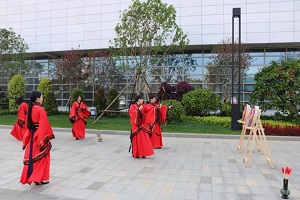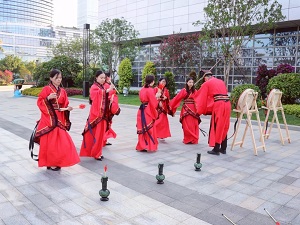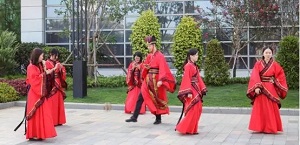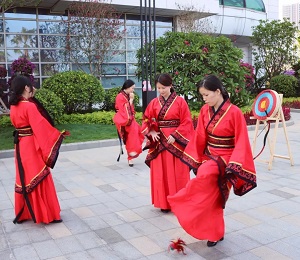Interesting Knowledge about China“Ancient Sports”
Publish date:2019-5-22 Pageview: 540
The Olympics originated in ancient Greece, and it was named after Olympia. In the legend, the ancient Olympics was created by Zeus, the King of all gods. The Ancient Olympics is held from 776BC to 394 BC, totally 293 sessions in all. Olympics is a sport event that encourage people all over the world to participate in the sport activities, regardless of the gender,age or the level of sport skill.
Chinese ancients loved not only poems but also sports. In the daily life of the ancients, the generation of a sport was usually closely related to labor, thus the sport competition of the Chinese ancients, which emphasized more on entertainment, was different from that of the west.
1."Arrow shot through the vast sky" -- Archery
Archery was one of the six ancient Chinese talents, the ancient people raised self-cultivation through archery, and boosted the cultivation of gentleman demeanor. At the same time, archery could be regarded as the start of ancient Chinese sports. It appeared more than 28,000 years ago according to archaeological discovery.
In the Wei, Jin, Southern and Northern Dynasties, archery activities developed greatly. In the Tang dynasty, the empress Wu Zetian established the system of martial arts imperial examination, regulating nine criterias for selecting and evaluating talents, five of which were categories of archery, including long distance shot, horse shot,static target shot, moving target shot , cylinder shot and so on.
In the Song dynasty, archery was more popular among the general people. According to relevant documents, in Hebei province at that time, there were more than 600 "Bow and Arrow Clubs" organized by the folk, with more than 30,000 participants, which could be seen as the earliest professional athletes organizations.

2. "Playing the games of throwing arrows to the distance pot after a class" -- Throwing arrows to the pot
If the courtyard was not big enough for archery, the sport of Throwing Arrows to the Pot would be anoter good choice. During the Spring and Autumn Period and the Warring States Period, archery was such a popular sport that one of the etiquettes for princes to entertain guests was to ask them to shoot arrows. At that time, it was considered a disgrace that a grown man could not shoot an arrow. It was unpolite to refuse when a guest was invited by the host to shoot an arrow. Later, it happened that some guests really could not shoot an arrow, and they threw arrows to the wine pot instead. As times went on, throwing arrows to the pot replaced archery as a game at banquets.

3. "Cockfighting and Cuju in the golden palace" -- Cuju
Cuju was also known as "Chuju", "Cuyuan", "Zhuqiu" etc. "Cu" had the meaning of kick,and "ju" was the earliest ball with a leather cover and filled with rice bran inside. Therefore, "Cuju" refered to the kicking ball activity of the ancient people, similar to playing football nowadays. According to historical records, as early as the Warring States Period, the game Cuju was popular among the Chinese people for entertainment. From the Han Dynasty, it became the method of training soldiers. In the Song Dynasty, Cuju organizations and Cuju player appeared. In the Qing Dynasty, Cuju on the ice became popular. Therefore, it could be said that Cuju was a sport with a long history and of great influence in ancient China.

4.Shuttlecock kicking
In ancient times, girls loved to play shuttlecock kicking together, a game called "Accumulating Flowers" . In order to have fun, they took off their skirts and wear short clothes. They kicked, laughed, and often went back home after sunset. According to Chen Naiqian's edition of Famous Poets’ Poem of Qing Dynasty, Chen Weisong, a famous poet of the early Qing Dynasty, wrote a poem titled "Qinyuanchun", in which he described the scene how the women played shuttlecock kicking.

Welcome to Xiamen Olympic Museum!
















